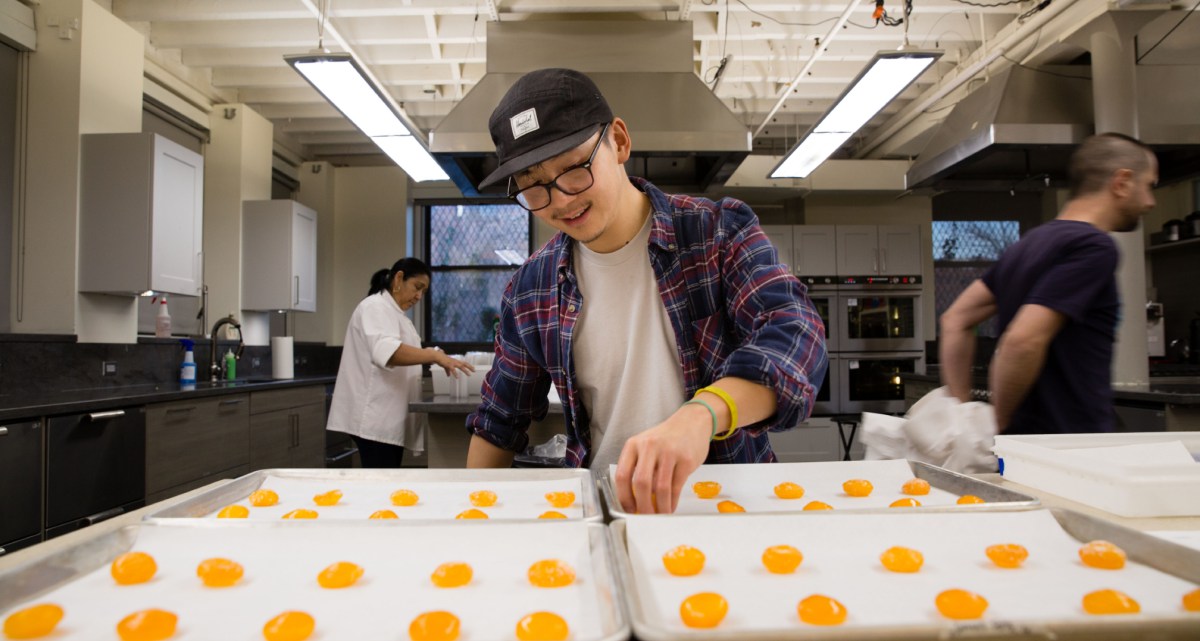In this weekly series, Associate Editor Tim Chin and Test Cook Sasha Marx take you behind the scenes of Cook’s Science and give you a glimpse into our recipe development process, from how we come up with recipe ideas, to test kitchen failures, to discoveries we make along the way. This week, we hear from Tim about his continuing experimentation with egg yolks.
I value simplicity in my life. And in my cooking, that’s no different. But sometimes, arriving at the best version of a simple technique—with precision and elegant execution—is harder than making a perfect Jacques Pépin chicken galantine. This week I started a project on cured egg yolks. Cured yolks are popular on the menus of many modern restaurants: salty, deep orange gems that can be grated over meats and vegetables to add richness and seasoning, or served in a sweet preparation, like with yogurt meringue. But their favor with chefs hides the fact that they are not difficult to make at home, nor is curing yolks a new idea. Curing is one of the oldest food preservation techniques known to man, and humans have been curing and enjoying cured (fish) eggs in the form of caviar for centuries. But the technique is still relevant today, and it’s still fun and enriching to do it yourself. However, developing a simple recipe does not always translate into easy testing—and as you’ll see, projects like this can be a huge pain in the ass to organize in the test kitchen.
The basic yolk-curing process involves burying raw yolks in salt, sugar, or a combination of the two and leaving them to dry out (for several days, in some cases) until they achieve textures ranging from jam-like to crumbly cheese. The yolks intensify in flavor as they cure, becoming salty and savory. When I began working on my version of this technique, it was clear that there are three major variables to consider: Salt concentration, sugar concentration, and curing time. To get some preliminary information, I designed a test involving five different cure mixtures set for varying curing time intervals (e.g., a 50/50 salt/sugar cure mixture for 2 days, a 25/75 salt/sugar cure mixture for 5 days, etc.). I staggered the starting dates for the cure times so my team could taste all the samples on the same day. In the end, I had twenty samples to taste—plus five extra samples involving some less traditional cures.
Tasting twenty-five samples of the same thing in one sitting is a labor of love. For one thing, Dan, Sasha, and I were tasting twenty-five egg yolks—enough cholesterol for weeks. For another, tasting in this format was a bit like playing Russian Roulette. We never really knew what we were gonna get flavor- or texture-wise, so it was exciting when things tasted good and discouraging when you found something straight up disgusting. But by the end of the tasting, we had a much better idea of (1) the type of cures we liked, and (2) the finished textures that we enjoyed. A 50/50 cure seems promising for a grated or shaved preparation, while a quicker cure in flavored sugar syrup opens avenues for sweet dishes (think like a sweet poached yolk).
I’m still working on this project. We’re exploring a few different directions with the yolks involving cure types and timing—as well as various flavor variations. Miso, sugar syrups, soy sauce, kombu, and even shio koji are all fair game. And be sure to look for the upcoming recipes on the site. For now, I think I need to eat a bunch of kale salad (recipe also coming soon) and work on my LDL level.
We’d like to hear from you, too. Have you ever eaten cured yolks? Made them yourself? Any cool or quirky applications? Tell us about your experience in the comments.
Photography by Steve Klise.


